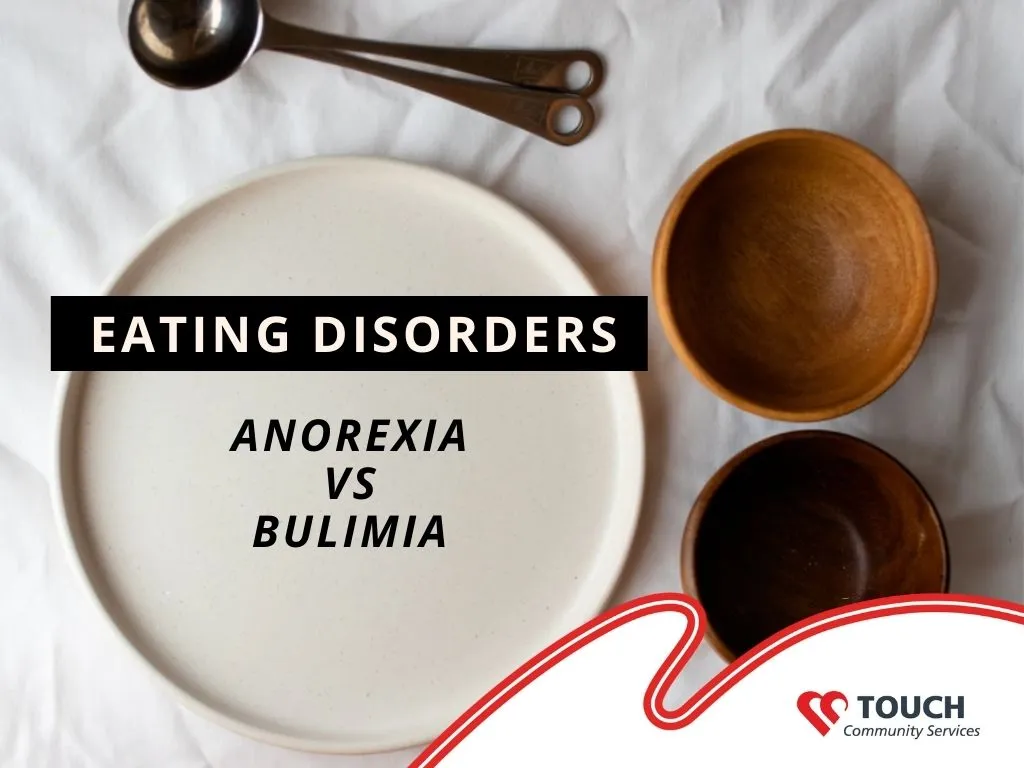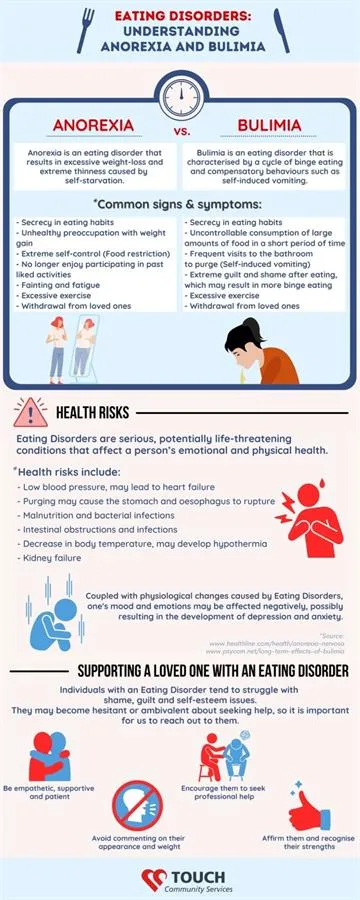Eating Disorders: Understanding Anorexia and Bulimia

Earlier this year, The Straits Times reported a rise in local eating disorder cases due to increased stress and anxiety from the disruptions of routines brought about by the COVID-19 pandemic. The Singapore General Hospital also saw a 15% increase in such cases, with the top two being anorexia nervosa (anorexia) and bulimia nervosa (bulimia).[1]
Eating disorders are complex and serious mental health conditions marked by an unhealthy preoccupation with food or body shape, which can negatively affect one’s day-to-day functioning and overall wellbeing. They can affect people of any age, gender or race. (Read about various types of eating disorders and their signs here.)
Some common causes of eating disorders include:
- Biological factors (genetics)
- Psychological factors (poor self-esteem, negative body image etc)
- Environmental factors (stress, past trauma, peer pressure etc)
In the infographic below, TOUCH Mental Wellness sheds light on Anorexia and Bulimia, the health risks of having an eating disorder, and how one can support a friend or loved one with the condition.

Are you struggling with an eating disorder or know someone who is? TOUCH Mental Wellness is here to provide the support needed to overcome the issue. Please call TOUCHline at 1800 377 2252 (Mondays to Fridays, 9am to 6pm) to speak with a counsellor.
TOUCH Mental Wellness (TMW) runs personalised therapy and counselling programmes to empower individuals to rise above their circumstances.
An advocate of mental wellness, TMW has been organising mental wellness awareness mass runs, talks and workshops since 2015. It works closely with corporations to conduct mental wellness talks with an aim of equipping employees with handles to cope with stress and help them build resilience. It also specialises in mental wellness awareness and educational programmes for schools.


